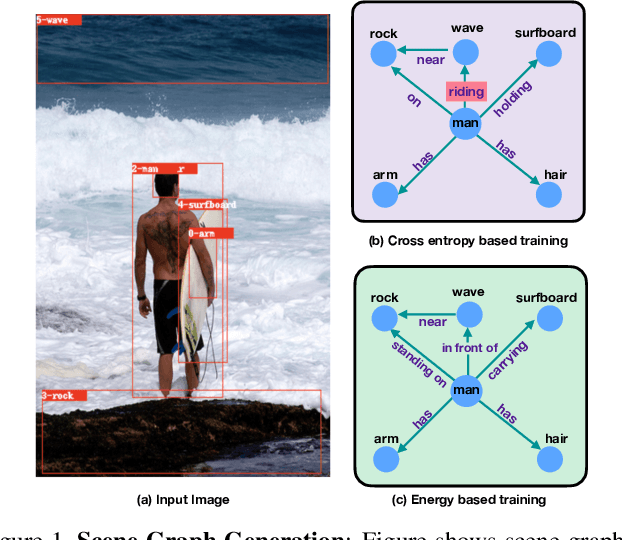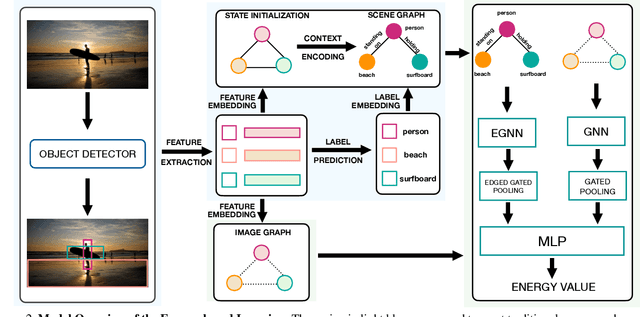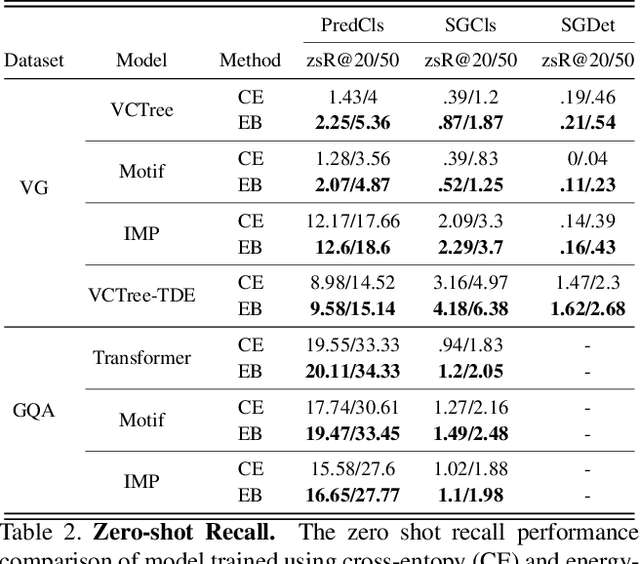Abhay Mittal
Challenges of Zero-Shot Recognition with Vision-Language Models: Granularity and Correctness
Jun 28, 2023



Abstract:This paper investigates the challenges of applying vision-language models (VLMs) to zero-shot visual recognition tasks in an open-world setting, with a focus on contrastive vision-language models such as CLIP. We first examine the performance of VLMs on concepts of different granularity levels. We propose a way to fairly evaluate the performance discrepancy under two experimental setups and find that VLMs are better at recognizing fine-grained concepts. Furthermore, we find that the similarity scores from VLMs do not strictly reflect the correctness of the textual inputs given visual input. We propose an evaluation protocol to test our hypothesis that the scores can be biased towards more informative descriptions, and the nature of the similarity score between embedding makes it challenging for VLMs to recognize the correctness between similar but wrong descriptions. Our study highlights the challenges of using VLMs in open-world settings and suggests directions for future research to improve their zero-shot capabilities.
ScaleDet: A Scalable Multi-Dataset Object Detector
Jun 08, 2023



Abstract:Multi-dataset training provides a viable solution for exploiting heterogeneous large-scale datasets without extra annotation cost. In this work, we propose a scalable multi-dataset detector (ScaleDet) that can scale up its generalization across datasets when increasing the number of training datasets. Unlike existing multi-dataset learners that mostly rely on manual relabelling efforts or sophisticated optimizations to unify labels across datasets, we introduce a simple yet scalable formulation to derive a unified semantic label space for multi-dataset training. ScaleDet is trained by visual-textual alignment to learn the label assignment with label semantic similarities across datasets. Once trained, ScaleDet can generalize well on any given upstream and downstream datasets with seen and unseen classes. We conduct extensive experiments using LVIS, COCO, Objects365, OpenImages as upstream datasets, and 13 datasets from Object Detection in the Wild (ODinW) as downstream datasets. Our results show that ScaleDet achieves compelling strong model performance with an mAP of 50.7 on LVIS, 58.8 on COCO, 46.8 on Objects365, 76.2 on OpenImages, and 71.8 on ODinW, surpassing state-of-the-art detectors with the same backbone.
Energy-Based Learning for Scene Graph Generation
Mar 03, 2021



Abstract:Traditional scene graph generation methods are trained using cross-entropy losses that treat objects and relationships as independent entities. Such a formulation, however, ignores the structure in the output space, in an inherently structured prediction problem. In this work, we introduce a novel energy-based learning framework for generating scene graphs. The proposed formulation allows for efficiently incorporating the structure of scene graphs in the output space. This additional constraint in the learning framework acts as an inductive bias and allows models to learn efficiently from a small number of labels. We use the proposed energy-based framework to train existing state-of-the-art models and obtain a significant performance improvement, of up to 21% and 27%, on the Visual Genome and GQA benchmark datasets, respectively. Furthermore, we showcase the learning efficiency of the proposed framework by demonstrating superior performance in the zero- and few-shot settings where data is scarce.
 Add to Chrome
Add to Chrome Add to Firefox
Add to Firefox Add to Edge
Add to Edge